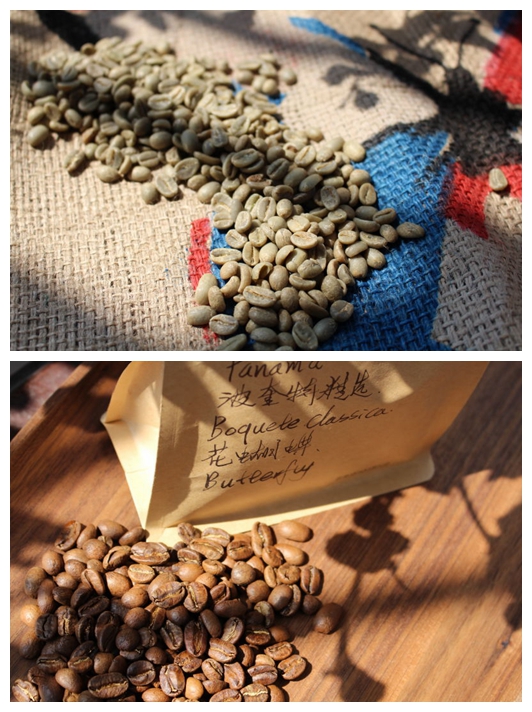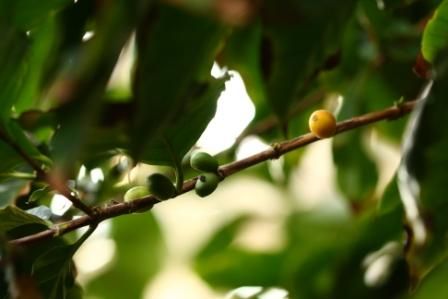The small universe in coffee is all-inclusive. What are the substances in coffee beans in detail?
How many substances does a cup of coffee contain? Coffee extracted by traditional and common methods such as hand brewing, Syphon, French press, etc. contains more than 200 substances; while when using steam extraction coffee machine and household mocha pot, because of its special extraction method, 1500 characteristics can be extracted in an instant. You can't imagine how many things there are in a glass of flavored water. Coffee's appeal is precisely what these different substances make up.
The chemical composition of coffee beans is quite complex, among which carbohydrates account for the most components. Coffee beans contain a variety of carbohydrates, a total of 60% of the total weight of green coffee beans, in addition to some protein, oil, tannin, caffeine, minerals and other trace components; and variety, origin and harvest season, will affect the composition of these components. The various ingredients of green coffee beans will react chemically during the roasting process and form a variety of coffee beans unique flavor and color.
1. a carbohydrate
Green coffee beans contain 1% reducing sugars, 7% sugar cane, 2% pectin, starch and other polysaccharides account for about 15%, and the rest is about 35% cellulose. Green coffee beans in the roasting process, most of the sucrose will be converted into coke grain, and with some carbonized cellulose combined with each other to form coffee color and flavor. Drink no sugar and milk "black coffee", in addition to coffee because of bitterness, and tannin acid, astringent taste, but also can feel a touch of sweet, which is the sugar contained in coffee beans dissolved in coffee caused.
2. tannic acid
After extraction, tannic acid will turn into a pale yellow powder, which is easy to blend into water. After boiling, it will decompose and produce Jiao Wu acid, which will make the coffee taste worse. If it is brewed well and put on for several hours, the coffee color will become thicker than just soaked, and it will not taste enough. Therefore, there will be a saying that "brewing is best to drink it as soon as possible". It is generally believed that the life span of a cup of coffee is 10 minutes. If you want to, you can try, every minute, the same cup of coffee taste is the same, and 10 minutes later, the coffee will taste different from when it was brewed.
3. protein
The protein content of raw beans is about 13%, and the amino acids in them vary during baking. Some of them react with sugars to form the color and smell characteristic of baked products. Although coffee beans are rich in protein, but in the brewing process, protein will not dissolve out, so coffee drink more, intake of ingredients is still limited, but the protein content of coffee grounds is very high, it is worth reusing.
4. minerals
The content is about 4%, mainly potassium, phosphorus, calcium, magnesium, sulfur and other substances. Due to the small proportion, it has little effect on the quality and flavor of coffee, and it will only bring a little astringency to coffee.
5. sugar
In the absence of sugar, in addition to the bitter taste of caffeine and the sour taste of tannin, you will also feel the sweetness, which is caused by the sugar contained in the coffee itself. After roasting, most of the sugar turns to caramel, giving the coffee its distinctive brown color.
6. caffeine
Different coffee bean varieties have different caffeine content. Generally speaking, coffee beans contain about 1 - 2 caffeine. One cup of coffee (about 10 grams of coffee beans) contains 100 to 200 mg of caffeine. Caffeine because of its particularity, coffee is the most attention of all components of a component, its nature and cocoa, theophylline in tea the same. In the roasting process, the composition of caffeine is basically unaffected. Caffeine has bitter taste, which is the main source of bitter taste in coffee. It is irritating to the human body, which makes some lovers love and fear. Therefore, there are low caffeine products on the market to meet the needs of different coffee families.
7. volatile components
The smell and aroma of coffee are mainly produced in roasting, coffee beans are not smelling what taste.
Some people say that coffee is brewed for a while, and the aroma of the room is floating, which is equivalent to half of the coffee that has been drunk. Coffee aroma is an important feature of its appeal, you can not drink coffee, but certainly can not resist its aroma temptation. Volatile components are the basic elements that bring aroma to coffee. There are currently more than 300 compounds in known coffee aroma mixtures, but most of them are low in content.
8. grease
Green coffee beans contain about 13% fat, in the coffee beans roasting, the content of lipid will be reduced accordingly, forming a part of the volatile components of coffee, and coffee aroma has a close relationship. Ripe beans in the storage process, often due to deterioration and produce bad smell, affect the value of coffee beans flavor. This is because the lipids in beans will undergo chemical reactions such as oxidation and decomposition when they come into contact with air, resulting in some compounds with bad odors. Therefore, coffee beans in storage, to avoid contact with the air, in order to maintain quality. But not vacuum is good, coffee beans themselves will also spit out some gas, in a vacuum environment, beans will still mix with certain gases, affecting the taste, so a better way to preserve is to put into a one-way exhaust valve dedicated coffee bag.
9. crude fiber
The fiber of the raw beans will be carbonized after roasting. This caramelization of carbon and sugar combines with each other to form the color of coffee, but the powdered fiber will bring a considerable impact on the flavor of coffee. Therefore, we do not encourage buying powdered coffee beans, because that does not taste coffee flavor.
10. fragrance
Aroma is the life of coffee quality, but also the best performance of coffee production process and roasting technology, production climate, elevation, variety, refining treatment, harvest, storage, consumer country roasting technology is appropriate, etc., are about coffee bean aroma conditions. The aroma of coffee was proved to be composed of several hundred volatile components such as acids, alcohols, aldehydes, ketones, esters, sulfur compounds, phenols and nitrogen compounds. Therefore, the disappearance of aroma means that the quality is poor, and the relationship between aroma and quality is extremely close.
The main chemical component of green coffee beans-
ingredients Content (%)
a carbohydrate 60.0
reducing sugar 1.0
sucrose 7.0
pectin 2.0
starch 10.0
chitosan 5.0
the hemicellulose 15.0
total cellulose 18.0
lignin 2.0
grease 13.0
Protein (N*6.25) 13.0
Ash (oxides) 4.0
tannic acid 7.0
N-methylnicotinic acid (soluble) 1.0
Caffeine (soluble)(Arablica species 1.0%;Robusta species 2.0%) 1.0~2.0
Source:
sunnybaycoffee's blog
Important Notice :
前街咖啡 FrontStreet Coffee has moved to new addredd:
FrontStreet Coffee Address: 315,Donghua East Road,GuangZhou
Tel:020 38364473
- Prev

Boutique coffee beans: Panamanian Pocket Butterfly Coffee beans Panama Boquete Butterfly
The Panamanian Poket butterfly coffee bean Panama Boquete Butterfly is said to contain 40% of the Deep-Fried Chicken coffee variety geisha Rosa (geisha) coffee beans (coffee beans that are more expensive than Blue Mountain Coffee). Gesha is one of the most primitive varieties of coffee in the world. Some people call it a geisha. Some people translate it into Rose Summer. Her name is gentle and floral.
- Next

What conditions do you need to grow coffee trees? Introduction to the process from coffee tree planting to coffee bean harvest
Coffee is a perennial evergreen shrub or small tree of Rubiaceae. It is a horticultural perennial cash crop with the characteristics of fast growth, high yield, high value and wide market. The planting conditions of Coffee Coffee is a perennial evergreen shrub or small tree of Rubiaceae. It is a horticultural perennial cash crop with the characteristics of fast growth, high yield, high value and wide market. Wild
Related
- Guji coffee producing area of Guji, Ethiopia: Humbela, Shakiso, Wulaga
- What is the most expensive variety of Qiloso in BOP multi-variety group?
- How to store the coffee beans bought home?
- Why are Yemeni coffee beans so rare now?
- Ethiopian Sidamo all Red Fruit Sun Sun Santa Vini Coffee beans
- SOE is mostly sour? What does it mean? Is it a single bean? what's the difference between it and Italian blending?
- Is Italian coffee beans suitable for making hand-brewed coffee?
- How to choose coffee beans when making cold coffee? What kind of coffee beans are suitable for making cold coffee?
- Just entered the pit to make coffee, what kind of coffee beans should be chosen?
- Can only Japan buy real Blue Mountain Coffee? What are authentic Jamaican Blue Mountain coffee beans?

